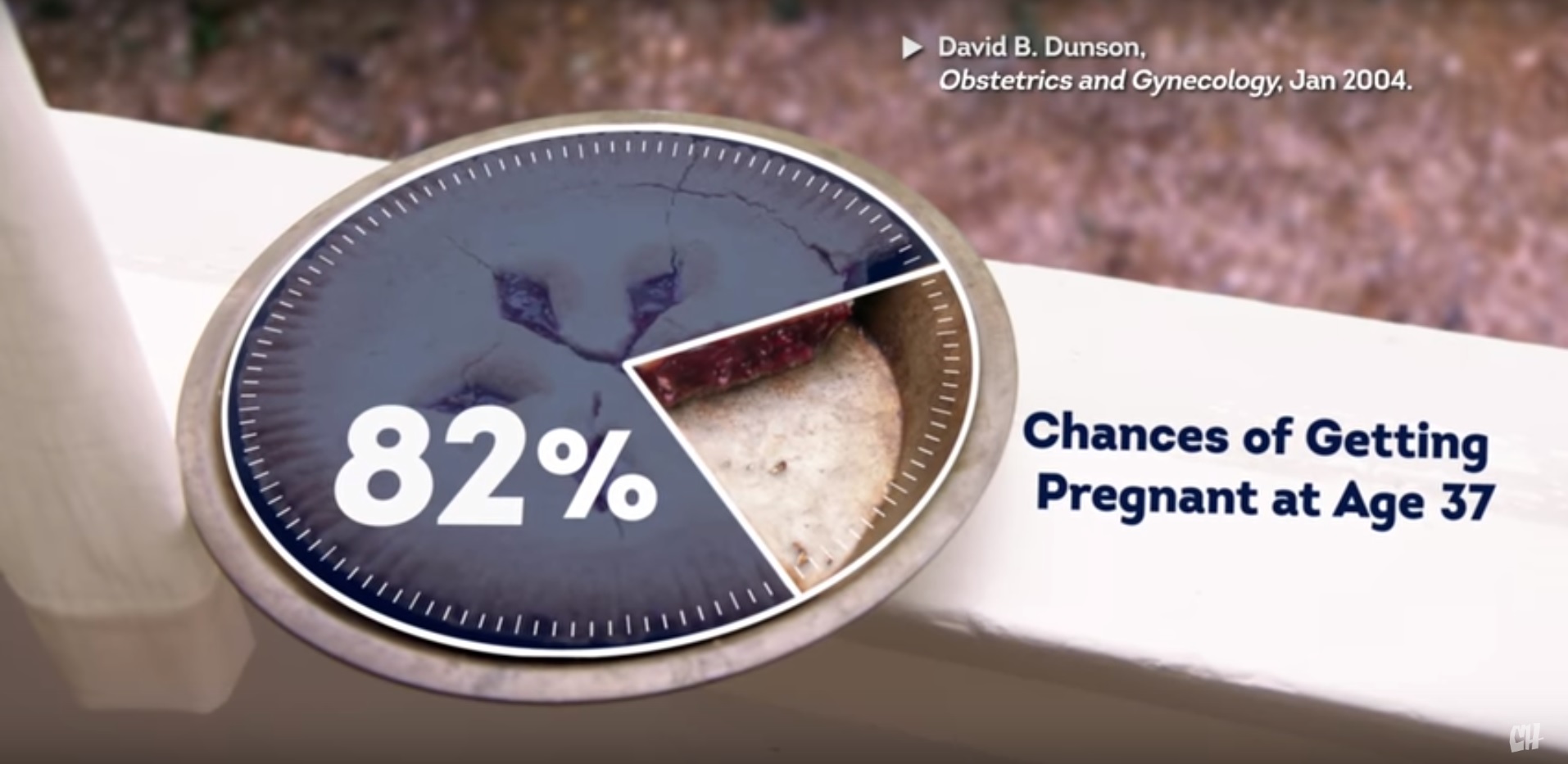Adam Ruins Pregnancy, Reminding Us Not to Get Our Fertility Info From Medieval France

If you can become pregnant, and you even have an inkling that you might want to bring a life into the world (or hell, even if you don’t), you’ve likely been fearmongered to death about your “biological clock” and how your time is running out and how you’ll basically just shrivel into a ball and die by the time you hit 35. Did you know that all that accepted “truth” is based on inaccurate information derived from the census records of French women in Medieval times?
In the latest Adam Ruins Everything episode, Adam Conover “ruins” the notion that women will have a much harder time conceiving children past the age of thirty-five, and that having a child after forty damn near guarantees birth defects. The truth is much less scary than that.
Yes, bodies age and change, of course, but to a much smaller degree than we are led to believe. Dr. Jean Twenge, psychologist and author of The Impatient Woman’s Guide to Getting Pregnant, did research into the research of fertility and discovered that no one was really questioning the fact that all the information that we have about fertility, in studies as current as the 2000s, is based on census records from the 1600s. “And that’s a problem,” Twenge points out. “because they come from a time before fertility treatment, antibiotics, or modern medicine.”
Conover adds that there could be any number of reasons women weren’t getting pregnant at that time, from disease, to their husbands being off at war.
Using modern data, we know that a 27-year old woman has an 86% chance of getting pregnant within a year. And a 37-year-old woman? 82% So…yeah, fertility decreases, slightly, by four percent, not the steep plummet we’re all taught to fear. What I found interesting is that even in a woman in her twenties, the chance of conceiving isn’t in the nineties. It’s still only at 86%, which means that no matter how old you are, getting pregnant is never a guarantee.
And what about the big 40 and the fear of increased birth defects? Yes, the risk for birth defects “double” in children conceived in women over 40, but that “double” is from .5 percent to 1%. Yes, technically that’s a number that has doubled. But it’s a teensy number that’s not worth the stress that is placed on women to conceive rightthisverynowbeforeit’stoolate!
The risk of miscarriages does increase as one gets older. In those under 35 the risk is about 10% while it is about 45% in those over 40. However, miscarriages are more common in women in general than is often talked about, and are the most common complication in any pregnancy. Half of those who have one miscarriage have two in a row. However, this doesn’t prevent a future pregnancy beyond that. Everybody and every body is different.
I just turned 38 yesterday, and while I don’t currently have children, I want to in the next few years. I’ve never been worried about fertility, though, because my mother had me when she was forty-four years old. I have two older siblings, and there’s a fifteen and sixteen year age difference between us. My mother, meanwhile, had a miscarriage in her twenties, before my oldest sibling was born, not later in life. You just never freaking know.
So, what have we learned today? If you want kids, have them when you’re ready. Not before. You have more time than you think.
(via College Humor, image: screencap)
Want more stories like this? Become a subscriber and support the site!
—The Mary Sue has a strict comment policy that forbids, but is not limited to, personal insults toward anyone, hate speech, and trolling.—
Have a tip we should know? [email protected]